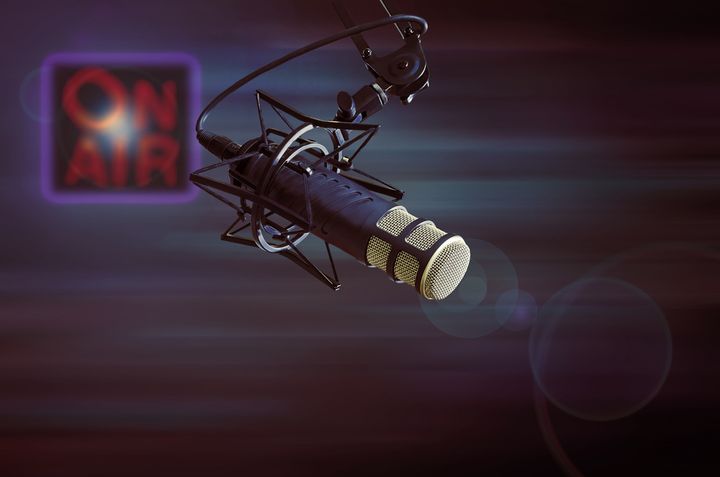
As old-fashioned as it may sound, starting a new radio station could prove to be a profitable venture - especially if you add it to your small business. After all, plenty of radio stations are still broadcasting for a good reason: they’re making money for their operators.
Somewhat surprising in the face of new digital technologies enabling the web and satellite radio, radio stations have survived as a commercial medium in much the same way that newspapers have lived on. Despite the prognostications of some naysayers regarding the imminent demise of analog radio, books, magazines and newspapers, some radio stations and print media companies continue to make profits and get acquired. For example, Amazon founder and billionaire Jeff Bezos purchased the Washington Post in 2013, shocking many onlookers. Yes, these mergers and acquisitions signal strategic moves in a shrinking market, and significant challenges still exist for radio stations in a digital world, but radio continues to represent a viable business nonetheless.
Depending on the broadcasting method and power requirements for your station, equipment and infrastructure can comprise a significant investment, reaching into the hundreds of thousands or even millions of dollars. Options also exist for leasing equipment already in operation, such as amplifiers and antenna arrays, allowing a new station to operate its studio out of any office space using just computers, an internet connection and some basic audio equipment like mics, headphones and a mixing board.
Aside from the various technologies involved, FCC regulations and licensing are some of the trickiest areas to navigate for radio broadcasters, and it’s advisable for any entrepreneur considering radio to seek the expertise of a radio engineer.
The Pro’s of Low Power Broadcasting
Low power means short range, of course, but it also means low cost.
Low power FM (LPFM) is regulated by the FCC, and the FCC stopped issuing new construction permits in 2013. However, just as the permit-filing window opened without much notice or fanfare to begin with, they could open it up again. The real downside to LPFM for the purposes here, however, is that the FCC will only issue licenses for non-profits, and it will not issue licenses to businesses or individuals for commercial purposes.
Low power AM (LPAM), on the other hand, as governed by Part 15 of the FCC rules, isn’t even regulated. And unlike the expensive equipment for broadcasting in full power, a good LPAM transmitter can be purchased for less than $1000. The range for LPAM, according to the FCC, is only about 200 meters, but some transmitters can eke out more from the meager 0.1 Watt of power using specialized antennas. Even better, LPAM transmitters can be clustered and synchronized to allow for progressive expansion over a much wider area. Pacifica Radio in Los Angeles is using LPAM to expand into niche areas.
Format and Revenue
Your desired format will determine whether you want to broadcast in FM or AM. FM is better for music, being high-quality stereo, while AM will suffice for talk radio.
A music station will incur fees for music licensing from groups like the Recording Industry Association of America (RIAA). Within the music space, stations tend to specialize in genres like classic rock, contemporary pop, country, hip hop, Latino or Christian. A more eclectic lineup is always possible, but outside of college markets it can be difficult to maintain a steady audience if the programming varies too widely.
A talk radio station will need to pay more for on-air talent and the content they present. In addition, the studio should be built to accommodate guests.
Commercial radio stations make their money primarily from -- you guess it -- commercials. In this way, the revenue model in radio resembles the ad revenue model on the web (or is it the other way around?). Radio stations and DJs also generate revenue by helping clients produce their commercials.
With most stations being bought out by large national conglomerates, a station focusing on the local market would stand out. Contests, specials and rewards from local businesses would draw interest from both listeners and those businesses. “We're always looking for new local advertising channels,” says Sherry Cross of the California law firm Simmrin Law Group. “I think radio is oftentimes an overlooked area of advertising. Many people still listen to the radio while they work, drive, or clean around the house. They can’t skip or click out of ads like on the internet. So though it may not reach quite as many people, it can still be a wise course of action.”
Internet Radio
Of course, Internet streaming is always available and affordable. Digital is still not taking over car listenership, though, especially in smaller towns. Most cars are equipped to listen to analog radio, and while it may be a passing generational quirk, people still tend to think of AM/FM when they think of radio.
Internet radio is global, which is good, but that means it lacks the local focus of analog radio. Still, Internet radio can be good as a starting point for testing your ideas and getting some experience in broadcasting. If you create an AM or FM station later, Internet streaming and archiving are great value-adds.
Go for It!
If you have an interest in broadcasting and the desire to pursue a business in radio, the LPAM option provides a realistic gateway to achieving those dreams. FCC regulations will cause you some hassle and expense for high power AM/FM radio, but you could start your low power AM station in a matter of weeks with a few thousand dollars, equipment included. The investment is so low, in fact, that you could begin the project as a hobby and grow it as you see fit.
